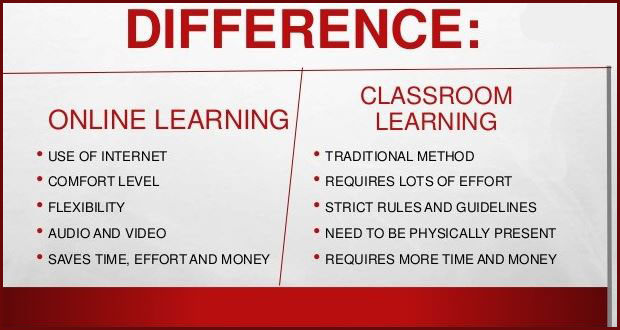In a world where e-learning is gradually becoming the norm, it’s important to know why this trend is good for students and teachers alike. There are several reasons why it is better than traditional education. e.g. e-learning allows you to explore topics at your own pace, it’s portable, and it’s more cost-effective. You’ll get here on Why e-learning is killing education. with details.
E-Learning is not killing education, but rather transforming it. To adapt effectively, we should focus on enhancing the quality of online learning experiences, ensuring accessibility for all students, and promoting a healthy balance between digital and traditional educational methods.
So what can we do to make learning more beneficial for students in the era of e-learning? This blog highlights some of how e-learning can be made more beneficial and offers suggestions on how to make learning more engaging for students.
What are the benefits of e-learning?
There’s a reason e-learning is taking over the education world – it’s a great way to learn new information, without all the stress and hassle of traditional learning methods. E-learning has a few extra benefits over traditional learning methods that make it a clear winner in the race to the future. For one, e-learning reduces stress levels and boredom during classes.
Moreover, e-learning is a great way to learn new information, without having to leave the comfort of your home. You can access e-learning at any time and from anywhere in the world. And lastly, there are no textbooks or notes required. All you need is access to the internet. So, if you’re looking for a more efficient way to learn new information, e-learning is a great option.
Hardest people problems
Standard e-learning’s click gimmicks are becoming more and more pitched to the general public. Educators must design E-learning experiences that are enriching, motivating, persistent, and engaging so our students will not just pass through the screens but leave with a lasting memory of what they have learned. Hardest people problems are a great way to gamily learn and keep students engaged.
Another way to make e-learning more engaging for students is by tailoring it specifically to their needs. For example, if a student struggles with math concepts, they can have those concepts broken down into simpler steps that are easier to understand. Similarly, if the student prefers visual aids when studying, educators can include plenty of screenshots and videos in their online lessons so as not to interrupt the flow of comprehension.
Being able to tailor e-learning experiences makes them more interesting for all types of learners.
Technology can be used in many ways to enhance student engagement by giving instructors control over pacing.
How e-learning is killing education?
E-learning is a powerful learning tool, but it’s not perfect. In contrast to face-to-face classes, eLearning doesn’t provide the same level of engagement. This means that students are less likely to retain information.
E-learning has led to a decline in student attendance rates, as students are busy elsewhere instead of attending class sessions. It’s no secret that eLearning is a cheap and easy way to deliver learning materials, but this trend needs to be stopped if we want to keep education alive. By providing more engaging eLearning experiences, educators can help students learn more engagingly and retain information better. It will take a concerted effort on the part of educators, but they can still make a difference. Standard E learning’s clicky gimmicks, In contrast, effective eLearning uses visuals and videos to keep students engaged. It also allows educators to scaffold material as needed, which helps students progress at a comfortable pace. Feedback is given at each stage of mastery.
Conventional E-learning’s clicky gimmicks
For eLearning to be effective, it needs to be engaging. One way that is often used to achieve this is by providing clicky gimmicks. These are features that students can touch or interact with to receive feedback or information. However, these features quickly become annoying and take away from the learning experience. Conventional e-learning’s clicky gimmicks often lead to students feeling frustrated and disengaged. Ineffective eLearning uses visuals and videos to keep students engaged
For eLearning to be effective, it needs to be engaging. One way that is often used to achieve this is by providing visuals and videos.
These are features that students can see and watch to learn information or receive feedback. Unlike clicky, these features don’t quickly become annoying or take away from the learning experience.
In contrast, effective eLearning uses visuals and videos to keep students engaged. It also allows educators to scaffold, which helps students progress at a comfortable pace. Feedback is given at each stage of mastery (prompt instruction). Design principles of effective eLearning help educators create material that is engaging, helpful, and easy to follow.
How do make e-learning more beneficial for students?
The education system is changing, and e-learning is playing a big role in that. Not only is it more beneficial for students, but it’s also becoming the go-to learning mode. To make e-learning more beneficial for students, it’s important to create engaging content. This can be done by developing interactive exercises and quizzes, or by incorporating multimedia content.
E-learning should be designed with several benefits in mind – like providing a flexible learning schedule and enhancing student retention. However, students may not be aware of all the benefits that e-learning has to offer. This is where schools need to step in and make the e-learning experience more beneficial for students. By developing engaging and beneficial e-learning content, schools can keep up with the digital age and remain competitive.
In English
E-learning is killing education because students are less likely to retain information. E-learning has led to a decline in student attendance rates, as students are busy elsewhere instead of attending class sessions.
It’s no secret that eLearning is a cheap and easy way to deliver learning materials, but this trend needs to be stopped if we want to keep education alive. By providing eLearning experiences, educators can help students learn more engagingly and retain information better. It will take a concerted effort on the part of educators, but they can still make a difference.
Powerful human stories
Another way in which e-learning can be used to improve student retention rates is by providing powerful human stories. Stories help students connect the material learned with their own experiences and make it easier for them to remember the information.
This type of learning is more engaging for students because they can relate the material learned to them.
By using stories, e-learning can help address some of the common problems that students face when trying to retain information, such as boredom and confusion.
Effective human tales can be created by using engagement tools, such as quizzes and polls. This way, administrators can gather feedback about the effectiveness of the learning experience and make any necessary adjustments.
In conclusion, e-learning is a more engaging way for students to learn than traditional education methods. By providing multimedia content and human stories, e-learning can help address some of the common problems that students face when trying to retain information.
10 reasons why e-learning is better than traditional education
There are several benefits to e-learning over traditional education.
For one, you don’t need to travel to a classroom
– The course material is delivered electronically to your computer screen.
This makes e-learning more accessible and flexible. You can take the courses you want when you want them.

- Traveling to the learning area can save you time that you would otherwise spend on transportation.
- Learn anytime and any place: You can learn anything from anywhere at any time. You will still be able to learn from your home, your local country, or on your trip. You’ll be able to learn no matter when it is in the morning or at night.
- Digitalization: Electronic versions of the course eBook, as well as any material related to the lectures, may be digitized in formats such as PDF, PowerPoint presentation, word files, and even video and audio formats. You can upload all of the course’s material to the online platform and make it accessible for everyone to download from their portal once you’ve created it. Hard copies and paper are no longer required.
Transcript or assignment
- Learners will be able to check their assignments from their portal once you create the due dates for them. The instructor will be able to grade the task simply and instantly by merely marking the grades of all the pupils who completed it when they provided it online.
- Exams and Quizzes online: You can select the form of questions for your online quiz, such as multiple choice, or even essay questions. You’ll be able to choose the proper response. After you’ve prepared the online quiz, simply send it to the platform and set a due date. The quiz will be available for the learner to take and complete within a specified period via the learner portal. The system will calculate and accumulate the quiz grade once the attempt is completed automatically.
- Virtual Classrooms: Virtual classrooms allow you to meet instructors and schedule sessions online. You’ll be able to ask any question you like and get feedback from your classmates. The instructor can have live chats with learners to answer all of their questions before or during the class.
Timetable online: You can find the timetable for your course on the platform. You’ll be able to plan out your class more effectively and efficiently due to this feature.
- Lessons Videos online: You can provide all of the lessons’ material in video form on the platform. This is a great way to keep your learners attentive and engaged since they can watch all of the videos at their convenience instead of having to take them during class time.
- University professors can take classes easily: With online learning, university professors can easily take a course or class with their students. All they need is to find the right platform and sign in. They will then be able to access all of the materials that they need for the course, including videos, lectures, and assignments. This saves them time since they don’t have to go look for these materials on campus or at other libraries.
- Conventional e-learning’s click gimmicks: Traditional e-learning platforms offer gimmicks such as flashcards, games, and quizzes to appeal to learners. These features can be distracting and take up a lot of time.
Additionally, e-learning is more interactive and engaging than traditional education. Research shows that e-learning has a higher retention rate than traditional education.
Finally, it doesn’t require any special equipment or settings. So it’s accessible to everyone regardless of their internet connection speed or hardware capabilities.
Read also more related topics: Why Didn’t the Physics Teacher Marry the Biology Teacher?
Best Ways To Communicate With Parents As a Teacher
Signs of a Bad Teacher With Preschool
Calling Teachers by Their First Name
How to Talk to Parents as a Teacher?
People also ask
Is it time for education to shift from a lecture/text-based format to an interactive/e-learning model?
It is time for education to shift from a lecture/text-based format to an interactive/e-learning model. There are several reasons behind this. First and foremost, e-learning also has the potential to improve student retention rates as they would not need to worry about forgetting important material.
In a lecture/text format, students are often required to read materials cover to cover which can be tiring and may lead to them forgetting what was previously learned.
Instead, using e-learning, students can access relevant materials whenever they need them, and they can also ask questions that will be answered in a way that reflects their learning style.
Secondly, learning can be more engaging for students as they can get their questions answered in a way that reflects their learning style.
For example, if a student prefers listening to audio recordings instead of reading texts, the material will likely be provided in audio form. This means that they won’t have to struggle to retain information and can focus on other things while learning at the same time.
How can e-learning be used to improve student retention rates?
E-learning can be a very effective way of retaining information for students. One reason why e-learning is more effective than traditional lectures and textbooks is that students can access the course material at their own pace.
This allows them to focus better and retain the information learned. Furthermore, e-learning also allows for assessment and feedback through quizzes and projects. This makes it a more engaging learning experience that helps students better remember the material learned. Design ideas that can be used in e-learning to help retain information include:
– Giving students the option to access materials at their own pace – This way, they are not required to read everything cover to cover, which can be tiring. Instead, they can choose when and how much information they want to learn. This also allows them to ask questions about the material if they find it difficult or confusing.
– Providing multimedia content – Including videos and sound recordings helps engage students and makes the learning experience more appealing.
What are the benefits of e-learning over traditional learning methods?
There are a few main benefits to e-learning over traditional learning methods. Here are a few: 1. E-learning has an interactive and engaging format that motivates students to stay engaged with the material. In addition, it is easier for students to access the material from any device and they can keep up with the class even when they’re on the go.
- E-learning is the most efficient way to learn as it cuts down on time spent on learning and allows students to access the material from any device. This makes e-learning a preferred learning method for students who have busy lives.
- E-learning encourages a student’s active participation in the learning process, which increases retention rates. This also helps students retain what they’ve learned for a longer period.
- The Best way to retain information. by breaking it down into small chunks that the student can understand and committing it to memory.
You may read here also related topics:
What is irony in literature and what are its different types?
And What do cats read for current events?
What information can the reader learn from characterization?
Is teaching a blue collar Job? or Is teaching a white collar Job?
Are there any other benefits to using e-learning in the classroom setting over traditional teaching methods?
There are many benefits to using e-learning in the classroom setting, such as: – Reduced stress and anxiety for teachers as all teaching is done online.
– There are many benefits to using e-learning in the classroom setting, such as:
– Increased student engagement and motivation as they can see the results of their learning right away.
– Improved academic performance due to better retention rates of information learned through eLearning courses.
– Lower costs
– no need for textbooks, expensive supplies, or classrooms. Design principles for good eLearning courses.
-Progressive leaders -Elements of user experience design
-User feedback and use cases -Elements of business analysis
So how did we get here to Online Learning?
One of the main reasons that online learning has become so popular is because it offers several benefits over traditional methods such as:
– Reduced stress and anxiety for teachers. All teaching is now done online, which means that there are no pesky class periods to contend with. This frees up both time and energy for more important tasks, like grading!
– There are many benefits to using eLearning in the classroom setting, such as increased student engagement and motivation. By giving students immediate effective feedback on their progress, they’re more likely to stay focused on the material. Progressive leaders in the field of education have long recognized that feedback is one of the most important factors in student success.
– Improved academic performance due to better retention rates of information learned through eLearning courses. Another benefit of using online learning tools is that students are more likely to remember what they’ve learned, especially when it’s broken down into manageable chunks.
– Lower costs – Unlike traditional teaching methods, which often require expensive textbooks and supplies, eLearning can be done completely free of charge! This makes it a very cost-effective choice for schools looking to reduce their overall budget.
– No need for classrooms.
What the Shift to Virtual Learning Could Mean for the Future of Higher?
However, despite these advantages, there are some drawbacks to online learning that schools will need to be aware of. Chief among these is the fact that students often perform poorer when they’re required to learn exclusively through digital means.
This is due in part to the fact that we typically cannot replicate physical interactions with other people. Such group work or discussion can be very beneficial for cognitive growth and development.
So What’s Holding Us Back from Failing E-Learning?
One common concern about online learning is this disconnect between student and instructor. Technology has developed considerably over the past few years.
Final Note
E-learning has a lot of benefits that make it a better learning experience than traditional education. Not only is e-learning convenient and flexible, but it also offers a variety of learning opportunities that can’t be found in a traditional classroom setting. However, e-learning isn’t without its problems.
To make it beneficial for students, it is important to find ways to make it more engaging and interactive. We hope that this blog has helped you to understand the benefits and problems of e-learning, and has given you some ideas on how to make it a more beneficial experience for students.

